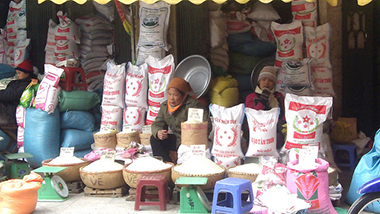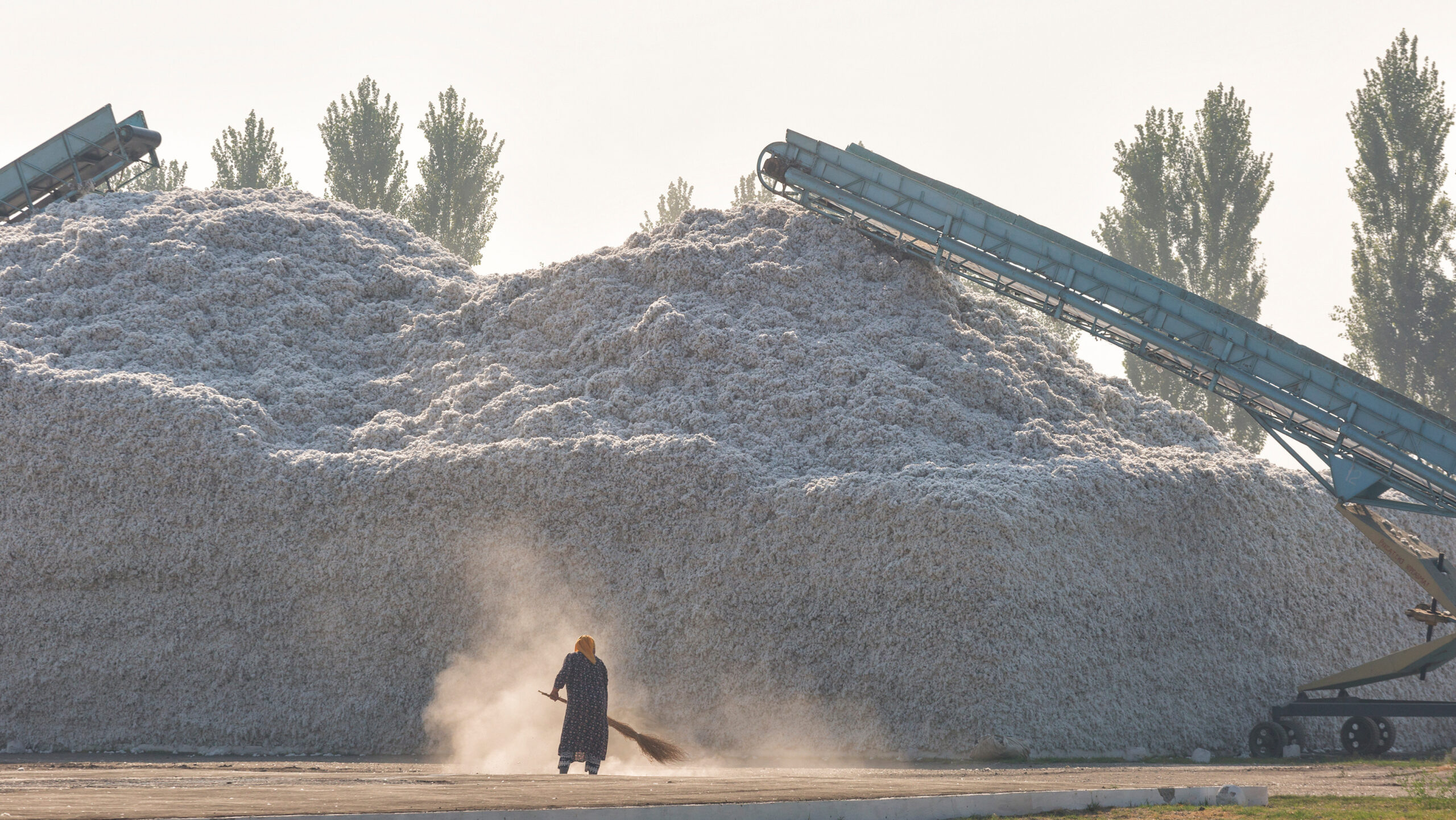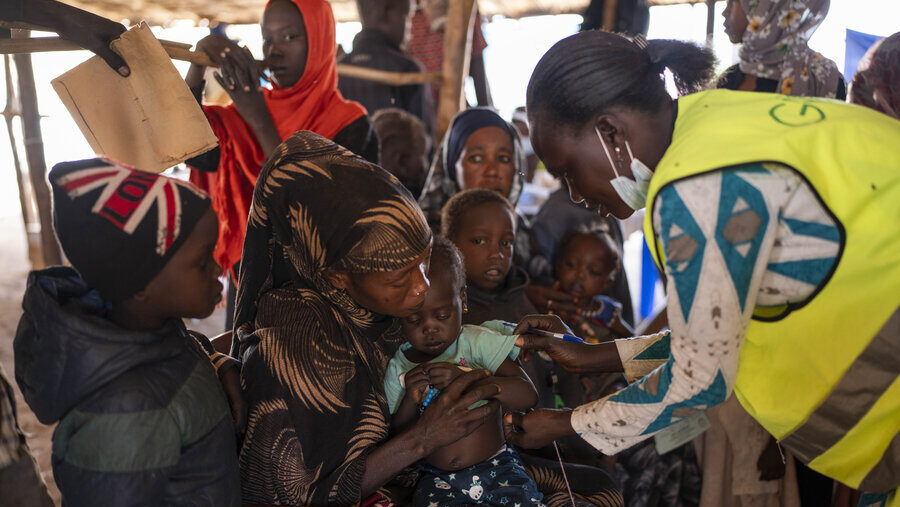Food price volatility and extreme price shocks have serious implications for politics, agriculture, climate, and food and nutrition security, according to a new book published by the Center for Development Research (ZEF) and the International Food Policy Research Institute (IFPRI), with support from the CGIAR Research Program on Policies, Institutions, and Markets (PIM). This main premise of Food Price Volatility and Its Implications for Food Security and Policy – that volatility matters – was demonstrated during the 2007-2008 global food price crisis and the various related bouts of political and social unrest seen in Haiti, Algeria, Egypt, Yemen, and throughout the Middle East during the Arab Spring. The book’s second main message is that there are many ways in which policymakers can address and cope with food price volatility and its effects on food security, including improving information and transparency regarding agricultural markets; facilitating trade to stabilize food supplies, particularly within regions; properly designing and utilizing domestic and regional food stocks; enhancing investments in climate-smart agricultural techniques and rural infrastructure; improving access to financial services for poor populations; and expanding social safety nets and nutrition-focused policies. However, to be effective, these strategies need to take into account both country-level economic, political, and social contexts and more wide-reaching global factors.
For example, Chapter 5, “Food Price Changes, Price Insulation, and Their Impacts on Global and Domestic Poverty”, examines the impact of changes in food prices, and policies to respond to these changes, on the poorest segments of the population in 31 developing countries and globally. Specifically, authors Will Martin and Maros Ivanic examine whether food price changes result in additional households falling below the poverty line, defined here as US$1.25 per day in international purchasing power.
The study uses a broad food price index rather than price changes for any one particular food product and focuses on price changes stemming from shocks outside of the developing countries studied (this is similar to the shocks suffered in 2007-2008). Globally, when food prices increase, poverty rises in the short term, even though poverty rates in some countries, like China and Vietnam, fall. At the country level as well, in the short term, increases in food prices have an adverse effect on poor populations in most of the studied countries, particularly India, Indonesia, and Pakistan; the exceptions are Albania, Cambodia, China, and Vietnam, where a 10 percent increase in food prices lowers the poverty level.
The authors also find that the relationship between poverty effects and price changes is highly non-linear even within a country. For example, in Albania and Vietnam, some net sellers of food rise above the poverty line when there is a small food price increase; on the other hand, net buyers of food are negatively affected by larger price increases.
In the long term, changes in food prices may impact the wage rates for unskilled labor sold by households outside their farm and may also change poor households’ output patterns. The study finds that higher wages for unskilled workers have a strong favorable effect on poverty, lowering poverty in most countries. Changes in agricultural output (households’ supply response) also have a positive effect on poverty, although not as strong an effect as wages. The authors highlight the importance, however, of noting that both the short-term and long-term results are related to food price changes that are purely exogenous to developing countries; if a price increase were to be due to a decline in productivity within developing countries, estimates of poverty effects would need to take into account the direct adverse effect on incomes stemming from such a decline.
The chapter also examines some policy options for responding to food price volatility; one of the most commonly used strategies is to insulate domestic markets against changes in global prices (for example, by using export restrictions or lowering import taxes). However, as the authors point out, this strategy entails a significant collective action problem – if multiple countries enacted policies to insulate their domestic prices, it would result in further price increases on the global market. Thus, trade policies intended to insulate domestic markets appear ineffective in stabilizing most domestic prices and often cannot protect poor populations against the negative effects of food price surges. The use of food storage policies in conjunction with these trade policy measures is slightly more effective but still does not remove the collective action problem; storage policies are also costly and difficult to manage and sustain, making them a challenge for many developing countries to establish successfully.
The authors suggest that policymakers in developing countries should focus on creating strong national social safety nets to help mitigate the negative impacts of food price increases on the poor and on establishing regional agreements to limit policies like export restrictions in times of food price increases.
Chapter 6, “Alternative Mechanisms to Reduce Food Price Volatility and Price Spikes: Policy Responses at the Global Level”, provides additional analysis of how policymakers can effectively respond to food price spikes. According to author Maximo Torero, many countries are focusing on policies at the national level – establishing national food reserves, increasing domestic self-sufficiency in food production, engaging in foreign direct investment to try to secure food security through transnational land acquisition, and regulating commodity exchanges. These policies, however, are costly and inefficient and could actually further distort markets and do more harm than good in terms of food security.
Instead, Torero emphasizes that food price volatility is a global problem and thus needs a coordinated global response. Global-level policies could include curtailing biofuel subsidies and making biofuel mandates more flexible so that land used to produce biofuels is balanced with land used for food production; increasing and diversifying global agricultural productivity and production in order to increase the number of staple food exporters and increase aggregate global food reserves; and reducing incentives for excessive financial activity in the food commodity futures markets by limiting speculation and enforcing rules for delivery on contracts or portions of contracts.
In addition, there is a clear need for improvements in the quality of information available regarding food price spikes and their impact on poverty and food security, as well as in the ability to forecast such spikes. The Agricultural Market Information System (AMIS) was established as a global platform to provide such information, including daily alerts of food volatility levels for several staple crops through the Excessive Food Price Variability Early Warning System. Such information collection and sharing platforms will be the first step in ensuring that future policies truly address the causes and consequences of food price spikes.
Several proposals have been put forth since the 2007-2008 global food price crisis to reduce price volatility and prevent future crises, but all require additional investment into future research regarding effective implementation and potential risks and benefits. Such proposals include the establishment of emergency humanitarian reserves and a financial instrument to reduce incentives for excessive speculation, the establishment of an international coordinated regional reserve, and the development of an international food agency to provide better information regarding food storage.
While any coordinated global response to food price volatility will be costly, the author points out that the losses caused by future food crises will be even costlier, meaning that a global solution will likely have net positive returns. There is a clear need for an international decision-making body to address excessive price variability in food markets, and any such body will require independent, trustworthy information regarding global conditions.







